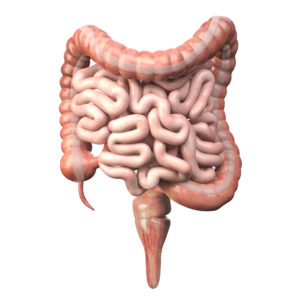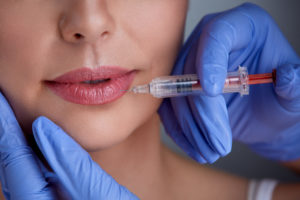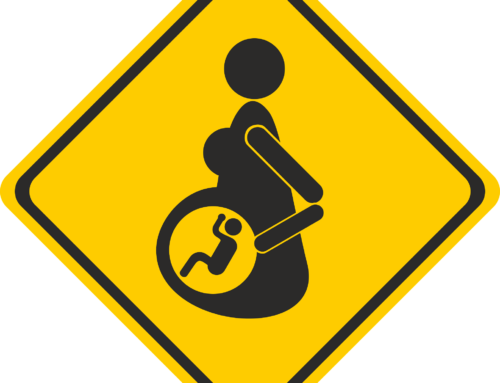What happens when the side effects of a procedure or medication become direct effects? How often does a prescribed solution create a bigger problem? Is it possible to reverse the process to find true healing? Read on…
The package insert of medical drugs and published studies of medical procedures exist to disclose the negative or adverse health effects so people can exercise informed consent. However, rarely are the negative effects presented to the patient, and often, the physicians themselves have no idea about the consequences of their products.
They may tell you, “if you were my son..” to convince you that there is no need to worry about anything going awry. By their bedside manner, they infer that you can join the thousands of people who have successfully undergone the same procedure or taken the same drugs.
What about when things go wrong? What about the failures? Who is ultimately responsible?
You are.
Health involves personal responsibility for the choices you make because you are the one living in your body. So you need to do your research and know your options. What are some of these common medical elective procedures that would be less common if people thought twice? Let’s investigate two: colonoscopy and BOTOX.
The Colonoscopy

Large and small Intestine
Every year over 14 million American are screened for colon cancer. Colonoscopies are recommended by doctors through the American College of Gastroenterology and the American Cancer Society starting at age 50 and every ten years thereafter. According to Baylor University Medical Center, “Colonoscopy plays an important role in the diagnosis and management of colonic diseases and in the prevention of colon cancer.”
What about mismanagement?
Could this “life saving” procedure leave you vulnerable in more ways than the obvious; bearing your bottom to stranger holding a cold scope with a camera?
To convince you that you are a good candidate for a colonoscopy, doctors rattle off statistics about colon cancer being the number 1 cancer, based on their diagnosis. While they claim colonoscopy provides protection against colorectal cancer, they do not disclose that, “the magnitude and duration of protection, particularly against cancer of the proximal colon, remain uncertain.” Neither do they disclose that complications associated with the procedure can be serious.
Doctors recommend colonoscopy on a case-by-case basis between age 76 and 85, with no screening for people over age 85. Why the discrepancy in target age groups? Could it be that those surviving into their eighties and nineties are well past the risk of colon cancer? Or do they choose not to consent to colonoscopy in the first place?
Is avoiding colonoscopy protective of old age? No one knows the answer to that since there is no financial incentive to do such a study. Alternatively, is there risk of early demise if agreeing to an invasive procedure that begins in your rear?
Reclaim Responsibility
It’s time to reclaim responsibility for your health by asking the right questions:
Is colonoscopy a safe procedure?
All the medical groups claim colonoscopy is safe. But if you research the risks, you get a long list. There is a high threat of contamination and infection introduced by the colonoscope. Some of the complications that can occur during a colonoscopy include:
- perforation (a hole in the intestine),
- bleeding, postpolypectomy
- syndrome,
- reaction to anesthetic, and
- infection.
A 1999 Newsweek article “Do Scopes Spread Sickness?” addressed the issue of underreporting:
“…critics say the official reports understate the rate of infection. A patient won’t necessarily link a fever to an earlier procedure-and medical institutions aren’t eager to report the cases they do know about.”
High infection rates from colonoscopy stem from the use of ethylene oxide gas sterilization, proven to be ineffective for sterilizing flexible endoscopes, like colonoscopes. This common sterilant for colonoscopes (gluteraldehyde) has actually been proven to cause colitis.
What is the risk of colon perforation from colonoscopy?
According to a 2003 article in JNCI: Journal of the National Cancer Institute, “The risk of perforation after colonoscopy is approximately double that after sigmoidoscopy.” For sigmoidoscopy, there is a slight risk of bowel perforation – tearing of the wall – and bleeding at the site. One 2010 study suggests that “the overall incidence of complications directly related to colonoscopy was 2.01 per 1000 exams.” But how long were patients monitored for direct effects?
What happens if the colon is perforated and lands you in the ICU or results in ongoing pain weeks later?
The perforation is dangerous due to the leakage of toxins into the body that can cause damage. Surgery is the choice of treatment to repair the perforated colon. It is successful in the majority of cases, but depends on how severe the perforation is and how long the surgery takes. Occasionally a small part of the intestine must be removed. In rare cases where the perforation has closed, the problem is treated with antibiotics.
What about that caustic prep drink that clears the colon walls so the camera has a clear view of your intestine’s mucosal lining? Is it worth annihilating your beneficial bacteria — the center of your immune system –to be at eye level with your microbes, who are born for that job? Do all doctors recommend taking probiotics after colonoscopy to prevent illness? Is there a better way to prevent colorectal cancer?
For some of these answers, download and read an e-book by Jini Patel Thompson, titled, What You Need to Know About Colonoscopy, then think twice about whether the risks outweigh the benefits.
Learn how to prevent feeling degraded from having a camera up your bum by preventing digestive problems in the first place, with the following:
- eating healthy, organic probiotic foods,
- limiting alcohol,
- knowing your toxic exposures,
- seeking out natural healing options that heal the gut from the inside out,
- finding a certified colon hydrotherapist who uses disposable equipment and uses warm water instead of a caustic prep solution that destroys your gut flora. Colon hydrotherapy is a technique that helps remove parasites, rather than introducing them through contaminated equipment.
BOTOX

Everyone wants to be forever young, forever perfect, but doing something unnatural has its consequences. After all, look what happened to Dorian Gray from the 1890 serial by Oscar Wilde titled, “The Picture of Dorian Gray.”
In this ageless story, after seeing a painting of himself, Dorian wishes for the painting to take the abuse of his lifestyle, so he can continue to live his life as he pleases. The wish is granted, and the portrait, reflecting his ugly soul, ages and becomes sick in his place, until his death when… well you’ll have to see for yourself.
Seriously, though, how many times is “too many” for a shot of BOTOX? You may first want to consider the obvious risks to BOTOX which include the following:
- Pain, swelling or bruising at the injection site.
- Headache or flu-like symptoms.
- Droopy eyelid or cockeyed eyebrows.
- Inability to raise eyebrows.
- Crooked smile or drooling.
- Eye dryness or excessive tearing.
However, for more details, look at the package insert:
More severe direct effects include an increased risk for skin rashes, and eczema, due to an allergic reaction from the “botulinum toxin product,” vision problems, dizziness within hours of injection, loss of bladder control, trouble breathing, loss of voice, and general muscle weakness, which can also be severe and result in “loss of life.” After years of BOTOX treatments, the nerves of an affected area may be spontaneously triggered for no apparent reason. Ironically, if you experience any direct effects, you are told to get medical help.
Now that you are clear on some of the risks, also know that when you eventually choose to cleanse your body from these toxins, you may re-experience some of these symptoms, since the body heals in reverse order of the symptoms..
New Directions
Why suffer side effects, direct effects, or any effects of unnatural products? The medical path of healing serves to suppress symptoms. Over time, what you suppress may be expressed. Things tend to rise to the surface. Is it time to reverse direction and go the path that your body would normally choose?
“The Direction of Cure” that homeopaths have referred to, says that cure takes place:
- From above down,
- From within out,
- From a more important organ to a less important organ,
- With symptoms disappearing in the reverse order of their appearance
Natural reversal happens when using natural tools.
From Within Out
When symptoms move from deeper organs to the surface, such as a liver infection changing to muscle pains, then changing to itchiness of the skin, the patient and practitioner can be confident that healing is underway. Symptoms moving in the opposite direction, deeper, means the person is becoming sicker.
From Above Down
Healing is heading in the right direction if symptoms such as skin rashes or joint pains move down the body as they improve during the course of treatment. Symptoms improving upwards through the body indicate that suppression is probably taking place.
From a More Important Organ to a Less Important Organ
The person whose neuro-digestive are replaced by sinus problems during treatment is heading towards health – the symptoms have moved from a more important organ to a less important organ. If sinus symptoms are exchanged for neuro-digestive problems following continual suppression by antibiotics and antihistamines, that patient is becoming sicker – symptoms are moving in the wrong direction.
Symptoms Disappearing in the Reverse Order of Their Appearance
If the sick person is treated according to the Law of Similars with medicines that match their symptoms rather than suppress them, their vitality can be strengthened and the imbalance corrected; their symptoms will disappear in the reverse order of their appearance. For instance, digestive problems change to respiratory problems, then to skin problems. Liver support is helpful in finally clearing the skin.
In many cases, the medical procedure or drug being recommended can cause the problem it claims to prevent. That is why you must do your own digging, before you allow someone to go digging in you.






